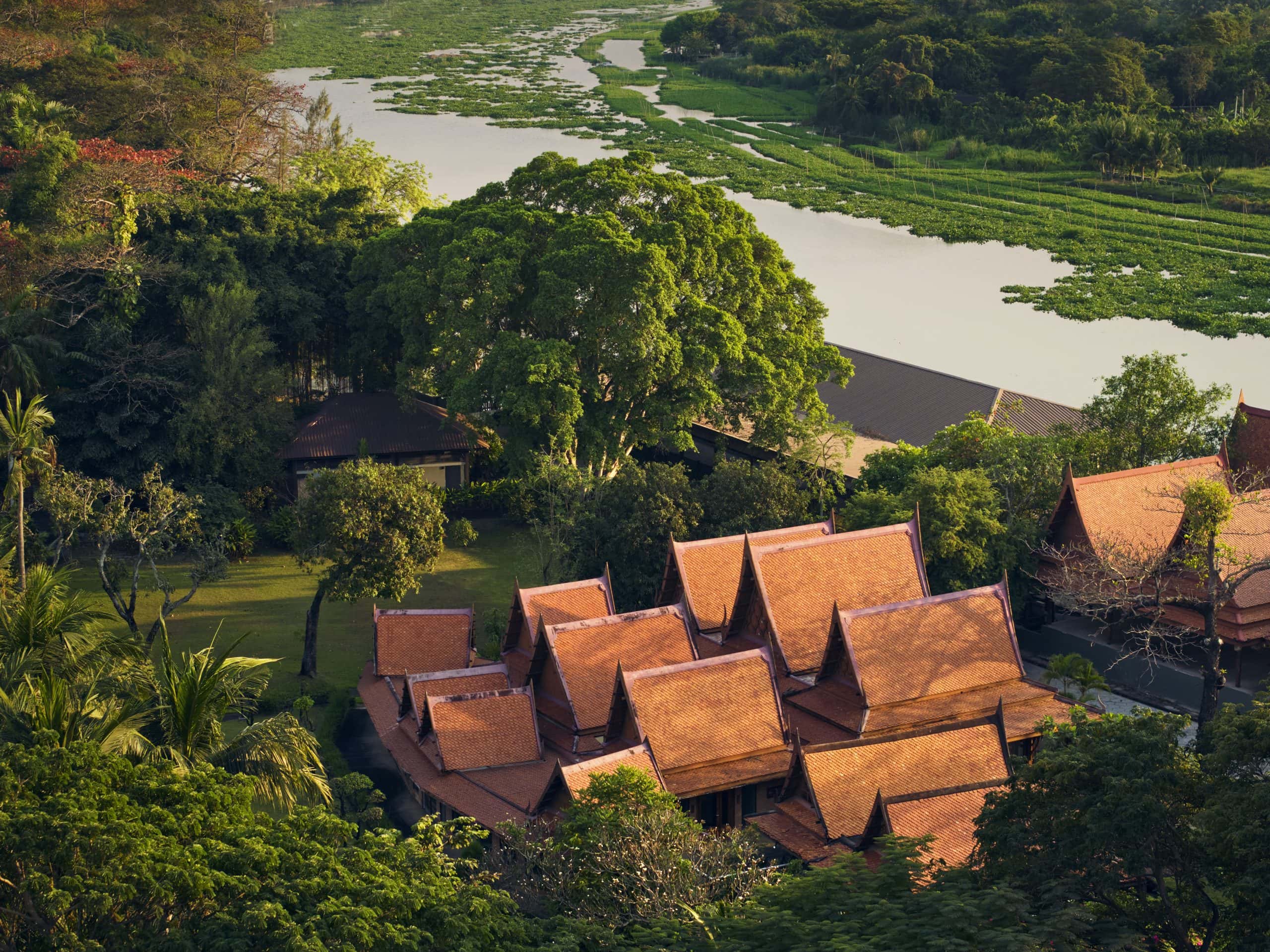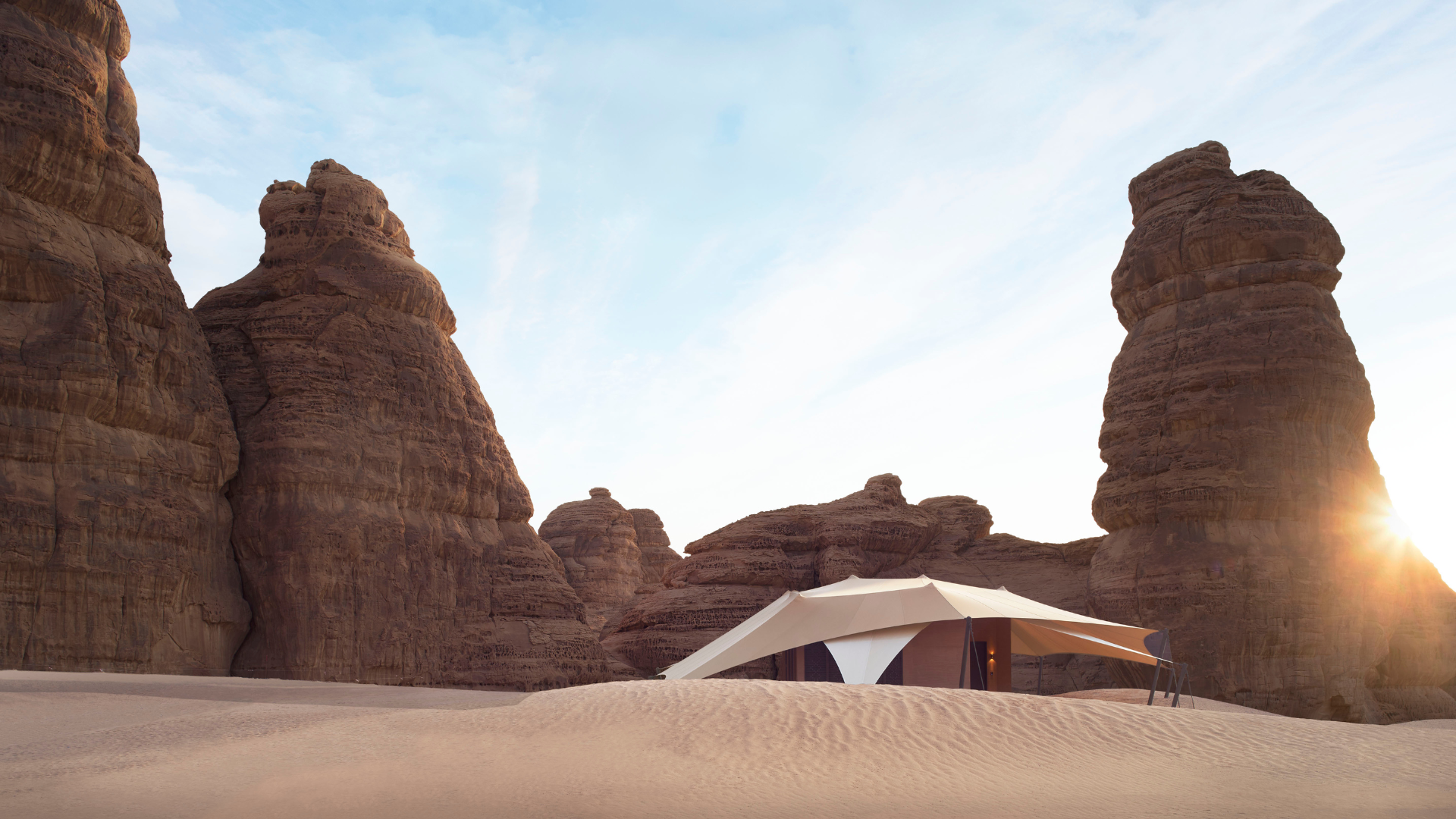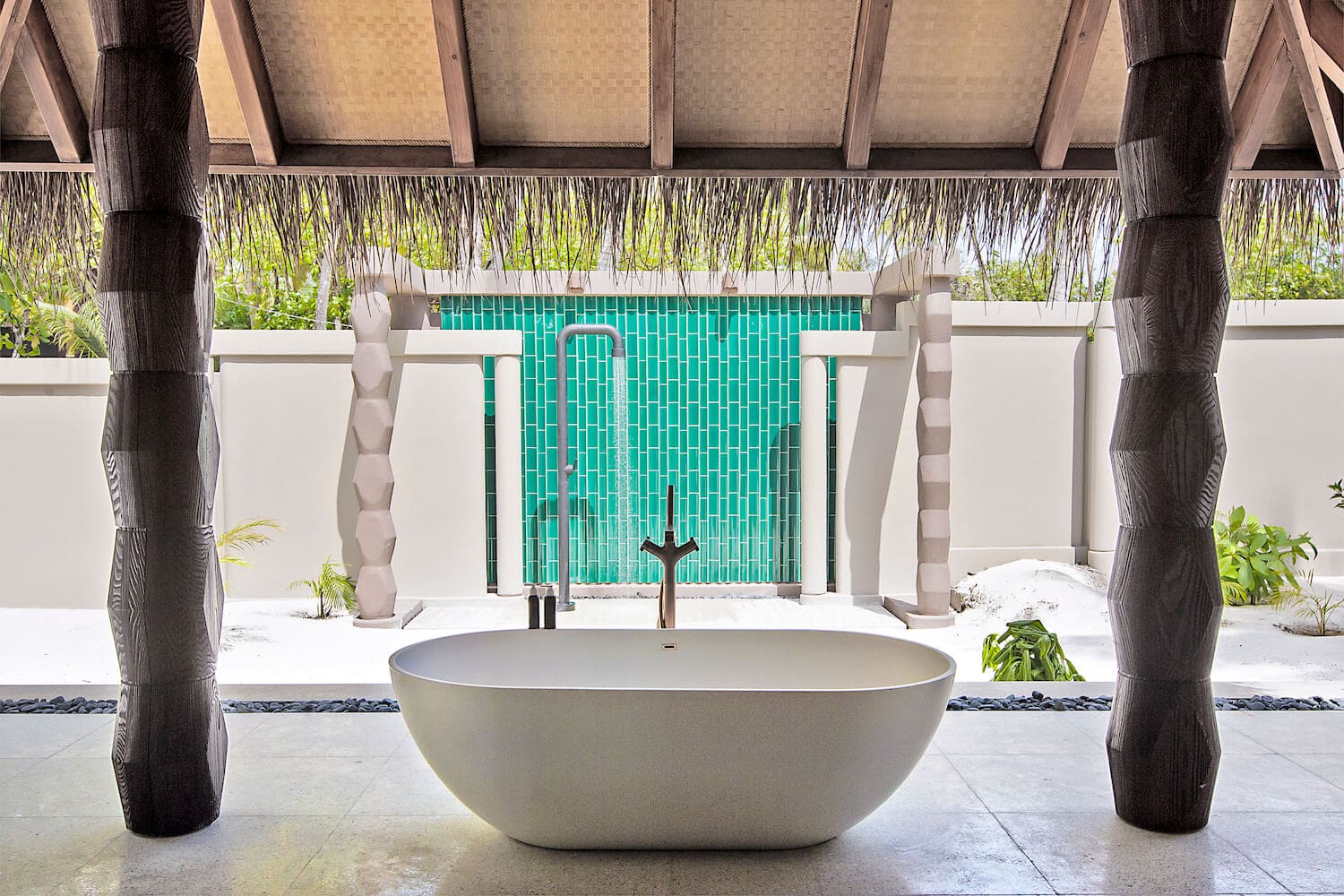Nestled in the foothills of the Himalayas on a sprawling 100-acre royal estate, Ananda in the Himalayas cultivates a kind of quiet magic. Perhaps its the beauty and pristine peace of the rolling hills, the spiritual energy of nearby Rishikesh, the preservation and practice of ancient tradition, or a winning mixture of all three; either way, the award-winning luxury wellness resort has made itself one of the most renowned destination spas around the world. On a mission to destress, Compare Retreats Editor & Chief Content Officer Rebecca Cairns visits the retreat in Northern India for a unique week of Ayurvedic massages, Hatha yoga and restorative meditation.
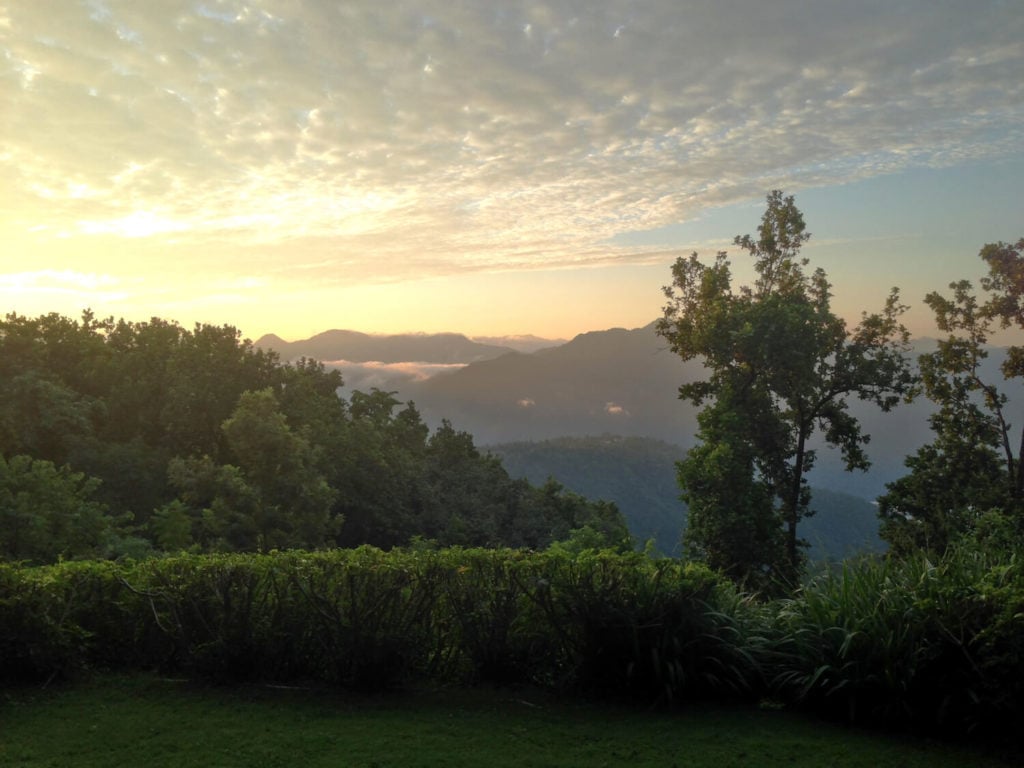
Mountain Location
Ananda in the Himalayas boasts a unique location in the foothills of the Himalayas, just a 30-minute drive outside the holy town of Rishikesh in Uttrakhand province, Northern India. If the town sounds familiar, that’s because it’s reputedly the birthplace of yoga: the small riverside town on the sacred Ganges is a haven of positive energy. Ananda, overlooking the valley, is an oasis of tranquility: the soundtrack of your stay will be birdsong and the breeze rustling through the leaves of the lush gardens.
Dehradun airport is just a 45-minute drive through forests and hillside, and easy to reach on a short flight from Delhi or Mumbai. The best times to visit are spring and autumn for cool, dry days: summer tends to be wet with monsoons and the area is prone to landslides, while winter is chilly. My January stay was certainly cold, but the resort was beautifully quiet so if you’re looking for a bit of peace and opportunity reflection its worth considering off-peak times.
Explore wellness retreats at Ananda in the Himalayas on Compare Retreats today.
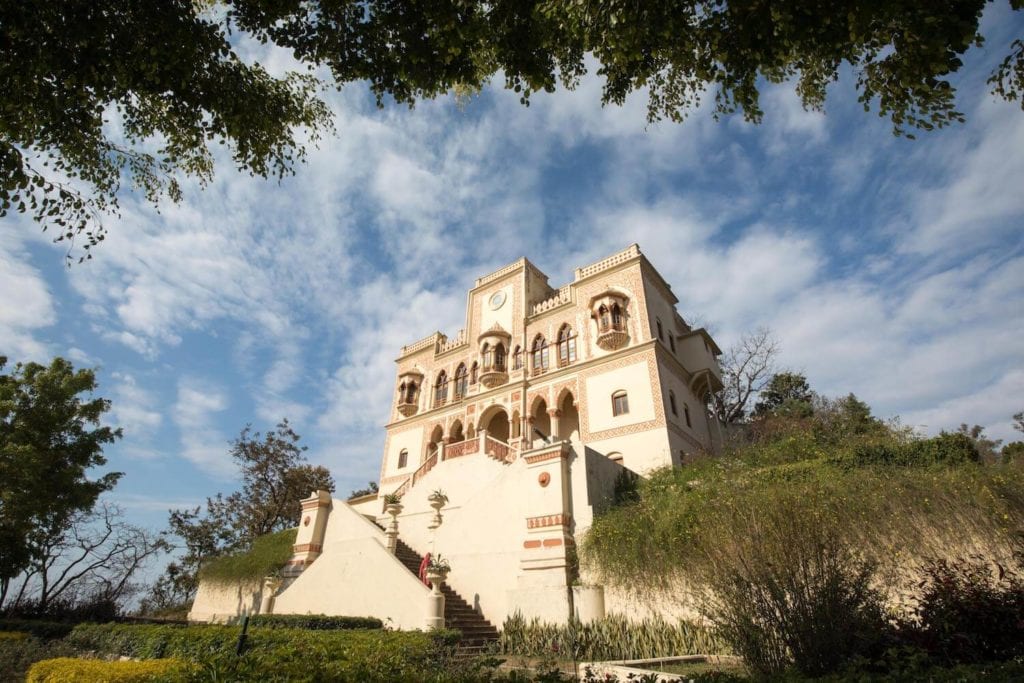
Palatial Resort
While many luxury resorts can tout to treating you like royalty, few are actually located in a palace. Ananda in the Himalayas is unique in that regard. Situated in the 110-year-old viceregal palace and grounds of the Maharaja of Tehri Garhwal, the retreat offers an old-world charm enhanced by its remote location—it’s truly a world away from the world most of us are used to.
A delicate shade of peach, the regal facade of criss-crossing steps, turrets, stained glass windows and red decorative patterns greets guests as they arrive at the resort. The palace building is still owned and frequented by the Shah family, but the viceregal palace at the back (built back in 1910 for the Maharaja to entertain visiting guests) is now the reception and common areas of the hotel.
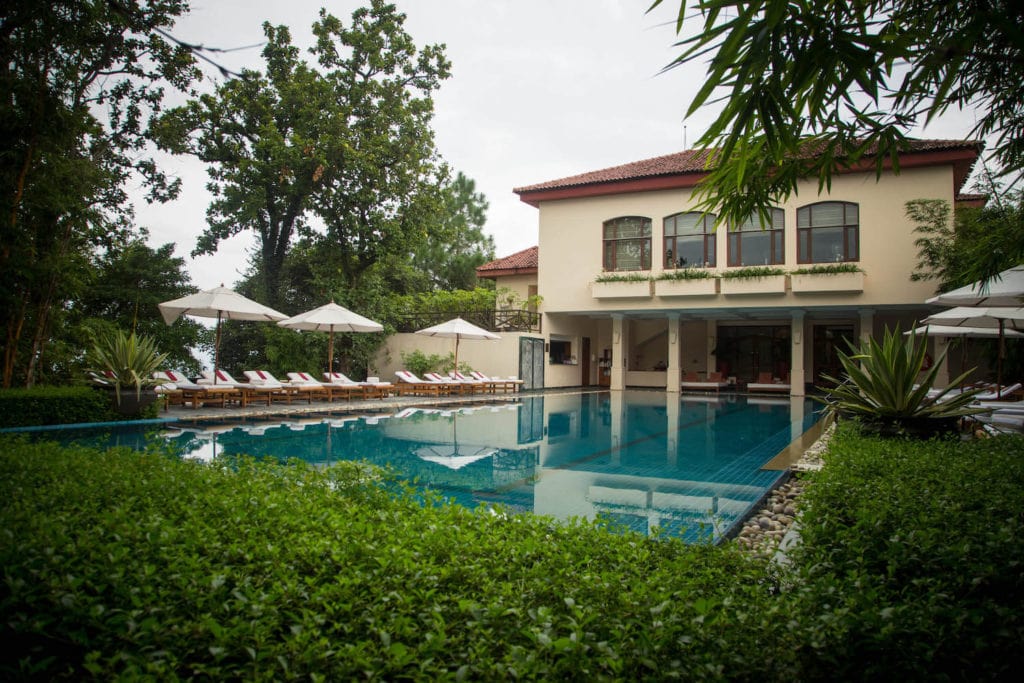
A library, billiards room, conservatory and drawing room decked out in nostalgic colonial decor set the tone of a bygone era, and up a grand staircase is the only guest suite in the main house, the Viceregal Suite.
Just 300 metres down the hill—a short walk or jaunt on the electric club car—is the rest of the purpose-built resort: guest accommodation, restaurant, spa, meetin rooms, pool, gym and golf course. The grounds offer walks in the landscaped gardens between the sal trees, with views of the valley available around every corner. Yoga and meditation are held in different places during different seasons: the Hawa Mahal pavillion, just five minutes from the main house, is used in summer, but during my stay the chilly weather took us indoors to the music hall in the palace.
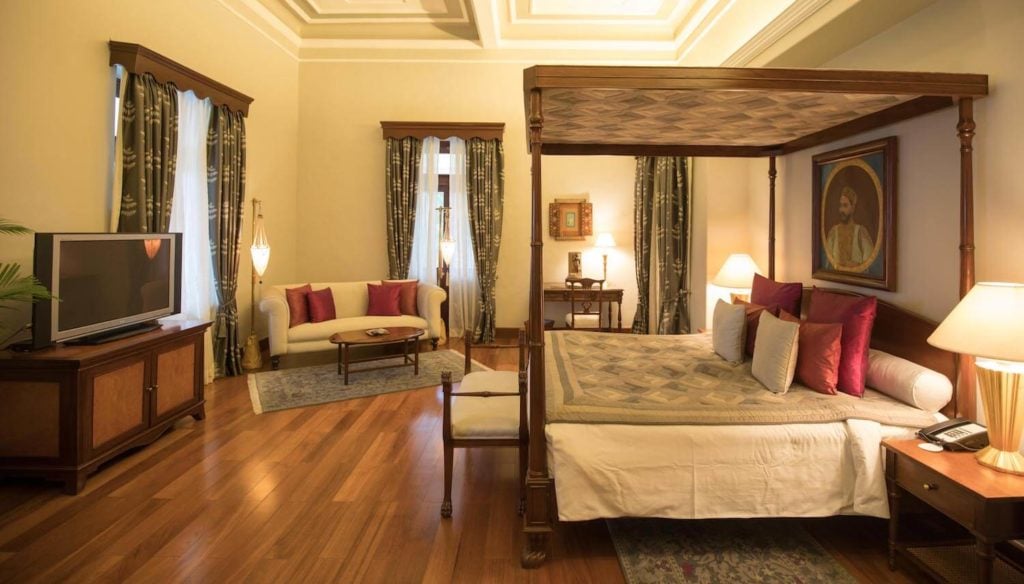
Regal Rooms & Suites
Ananda in the Himalayas has 78 rooms and suites, which includes one suite in the main house and three one or two-room villas; all other accommodation is located in the guest quarters. I stayed in a valley-view room, with a small living area, large king-size bed, seperate dressing area with walk-in wardrobe and an ensuite bathroom.
Fitted out with every modern comfort imaginable, the accommodation carried an air of the traditional decor from the main house: dark green marble accented the bathroom, dark wood and carpet around the room. My visit in January meant I didn’t use the balcony much, but the views across the valley and gardens below were stunning.
Groups and families should consider the villas for added privacy and their own pool, while the Vicregal Suite is a must for anyone looking to add a little romantic to their stay.
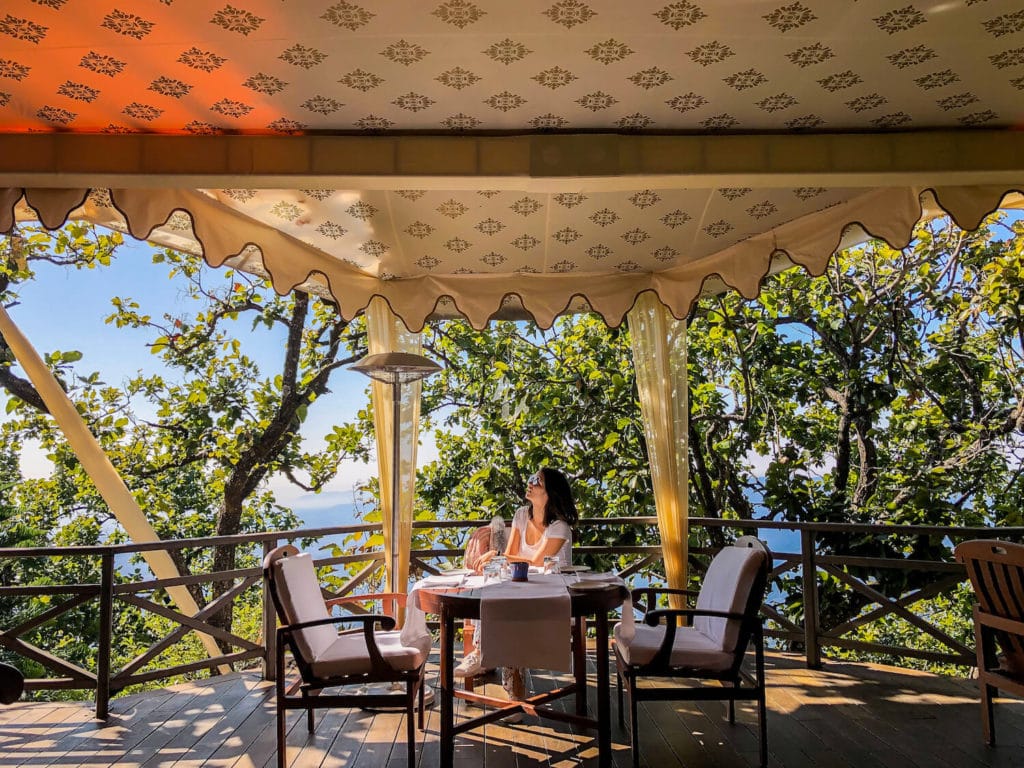
Dosha-Diet Dining
The food at Ananda is a treat: a mixture of fine dining and wellness, it’s a concept that many have tried and many have failed to balance correctly. Three-course lunch and dinner menus of around 600 calories each mean it’s impossible to over-eat while feeling distincty satisfied at the same time.
At breakfast, you might think the risk is higher for diets to go astray: a buffet table dominates the centre of the room. Not to worry: Ananda’s dosha-prescribed menu provides you with a main dish that usually sits around 100-130 calories, and guests are welcome to choose additional items from the buffet, which is a mix of fruits, cereals, nuts, vegan compotes, juices, cheese and dips, fresh baked breads, and granola bars, with many items vegan, gluten-free and/or sugar free.
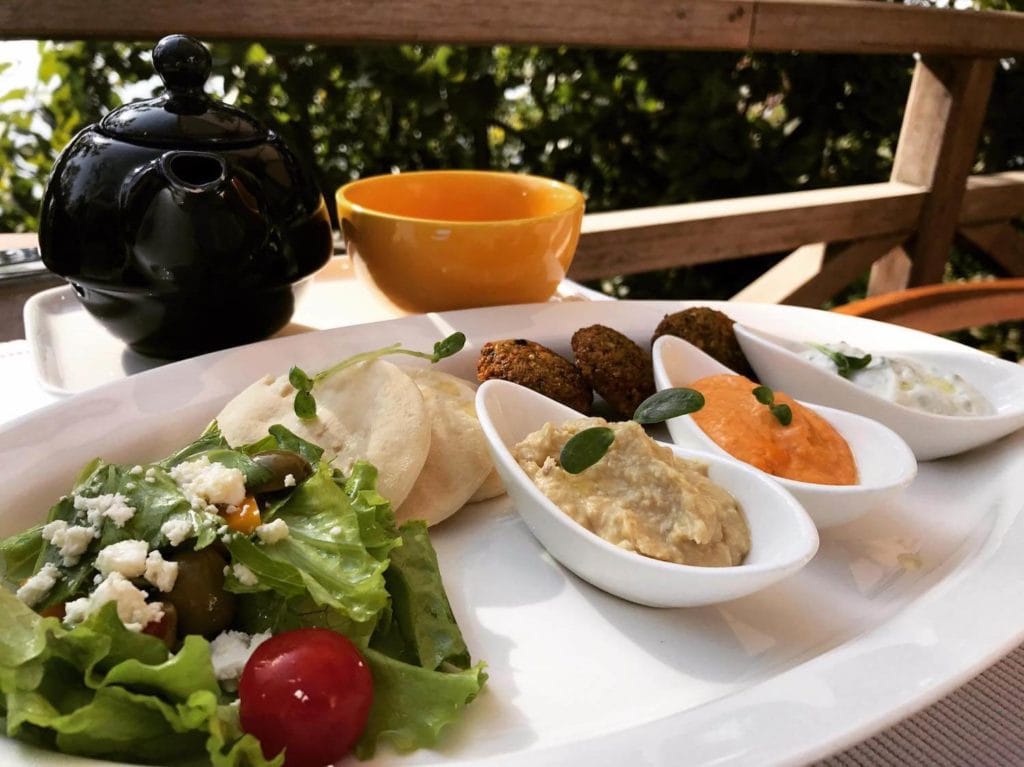
Most mornings, the main was so filling in itself that I only managed an additional bowl of fruit and yoghurt from the buffet—hardly enough to throw my wellness diet out of whack.
The diet is restrictive in a sense, but the food is genuinely delicious and the menu changes daily so I was never bored or tempted to deviate from the dosha diet. The cuisine is a mix of Indian, South East Asian and Western, all with a creative wellness twist on them—lentil dosas for breakfast, fish tikka or greek salad for starters, red pepper cannelloni or red rice with vegetable curry for dinner. It was an eclectic menu of flavourful and thoughtful dishes.
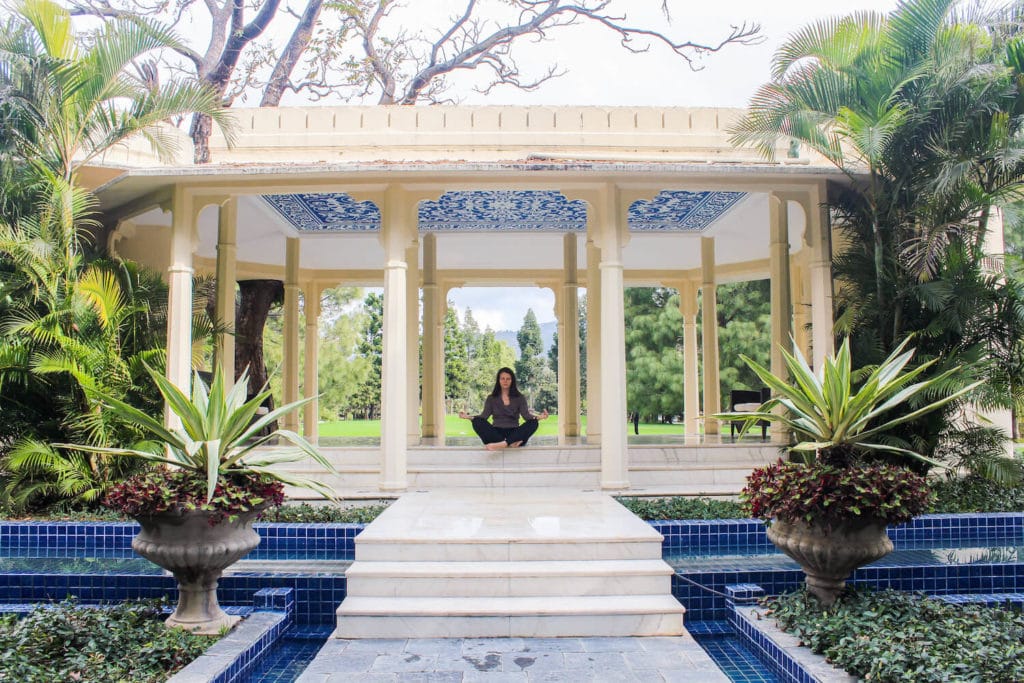
Traditional Indian Wellness Offerings
Ananda in the Himalayas offeres a 360-degrees wellness experience: every part of your stay revolves around wellbeing, regardless of your programme choice. Currently, the resort offers 11 different programmes which range in focus from yoga to detox. I experienced the six-night Rebalance Programme, designed to destress with daily ayurvedic spa treatments and a choice of activities from the weekly schedule.
See also: 5 Luxury Yoga Retreats In India To Find Your Inner Peace
Every programme begins with a wellness consultation, and the doctor ran through many health and lifestyle questions to establish my dosha imbalance. This is the core principle of Ayurvedic medicine: every person is made up of three doshas (Vata, Pitta, Kapha) but one dosha is usually predominant in a person and unbalanced. I’m Pitta-predominant, which often relates to stress. I was given dietary and activity recommendations for my stay, and the Ayurvedic spa treatments were adjusted to suit my dosha.
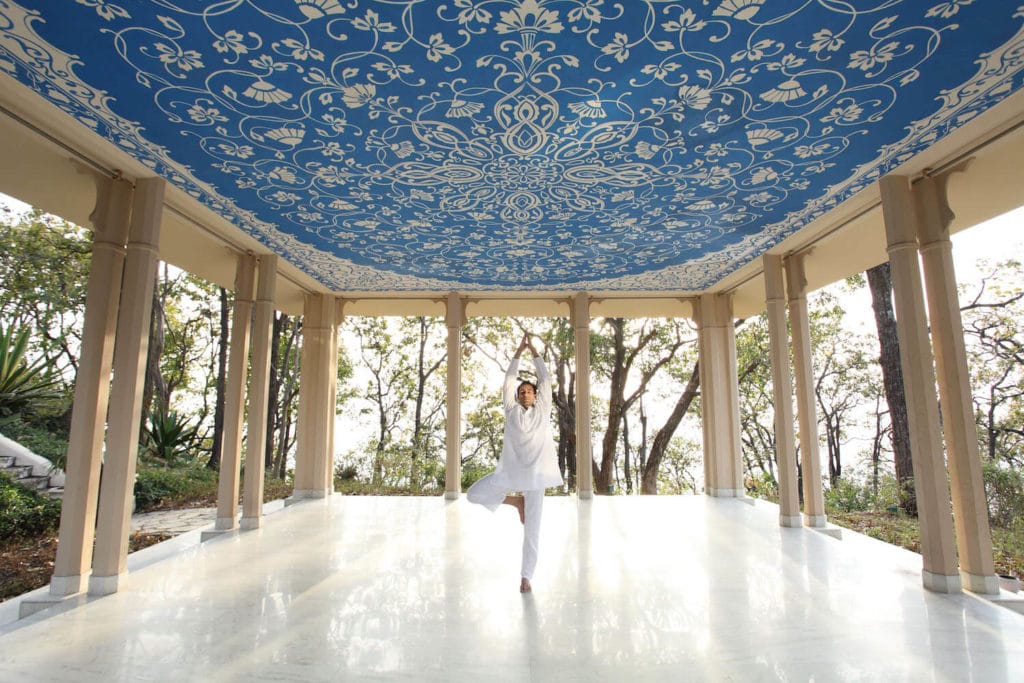
Each day, the activitiy schedule included two morning yoga sessions, meditation, stretching, a gym session, an introductory session with the visiting practitioner, and two Vedanta lectures. The schedule included weekly activities too, like hikes, nature walks, golf lessons and cooking classes which guests can choose to join as they wish.
07:15 Hatha Yoga
08:15 Breakfast
09:00 Stretches
09:30 Introduction with visiting Master
10:15 Vedanta
11:30 Spa Treatment
13:00 Lunch
15:00 Golf Class
16:00 Gym Session
17:00 Meditation
18:15 Vedanta
19:30 Dinner
For anyone not familiar with the term, Vedanta translates to, “the end of knowledge” and is the core philosophy that makes up the Hindu faith, as well as the foundations for practices like Ayurveda, yoga, and meditation. It gave me a better understanding of the core values that underly these wellness practices and how they fit together in a framework of wellbeing. Topics for Vedanta included exploring concepts of Karma or how to reframe stress, and it certainly provided food for thought.
It was my first time trying Hatha yoga, and I loved it. Ananda offers beginner and intermediate classes, and the yoga is much more traditional than most classes taught around the world. The focus is on body movement and functionality by moving joints and releasing blockages. The meditation offered multiple different options, too, and each class was a run down of different pranayama (breathing) and meditation methods, from guided to humming. I’ve never been very good at meditation, but the variety kept me interested and provided lots of options for me to pick and choose what worked for me to take home to my daily practice.
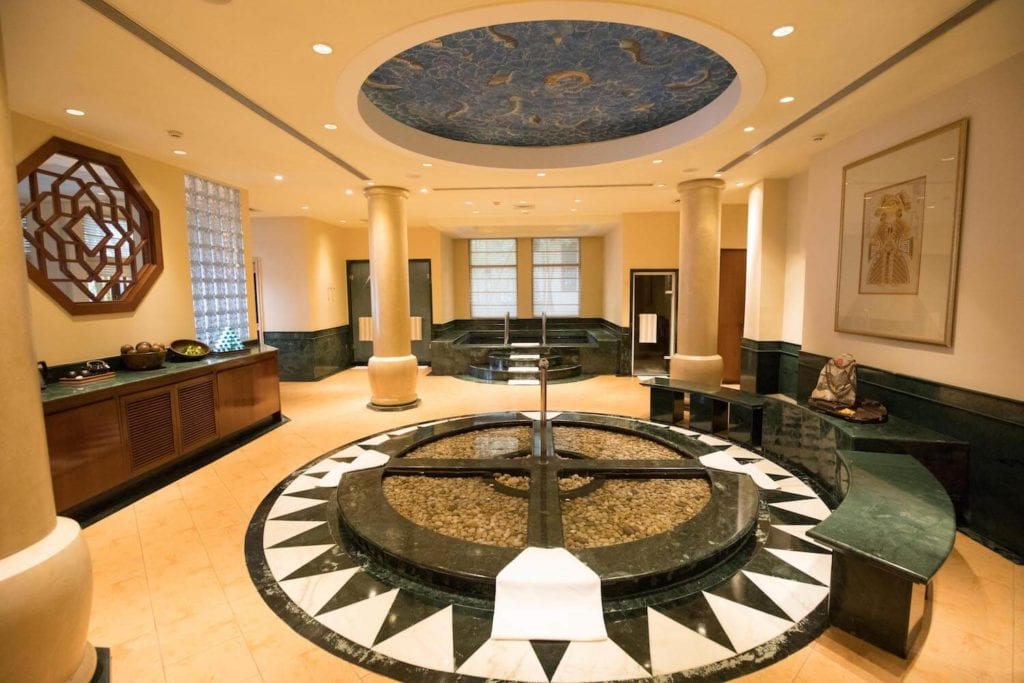
The spa at Ananda is one of the best I’ve ever been to—clearly others are in agreement, as the resort just won Conde Nast Traveler’s 2019 World’s Best Destination Spa Award. From the water facilities and rest area to the treatment rooms, it was a luxurious way to experience the wonders of Ayurveda. The spa is extensive in size, and the maze of corridors, vestibules, courtyards and airy hallways—complete with a man playing the flute in the central spa lobby all day long—has a palatial feel to it, even though it was built nearly a century after the original palace.
See also: The Best Luxury Ayurvedic Retreats In India
The treatments themselves are a delight. Every masseuse was knowledgeable, confident and passionate about their work with an excellent ability to explain the treatment and its intended results. Every treatment started with a short prayer and foot bathing ritual, and full-body massages delivered on the promise of a head-to-toe treatment.
In Ayurvedic massages, pouring oil over the head and hair is common, so if like me you have sensitive skin on the face, request a dry head massage instead—it’s no less relaxing. It’s difficult to pick a favourite, but the Abhyanga massage—a traditional Ayurvedic oil treatment, which uses a mixture of spices and herbs to suit your dosh—was very unique. Using herbal pouches and warm oil, the treatment is designed to moisturise and detox the skin and relax nerve and tension points. The signature Ananda Fusion massage was also really special: a 90-minute full body massage using a home blend of oils that included cardamon and orange, the experience was deeply relaxing.
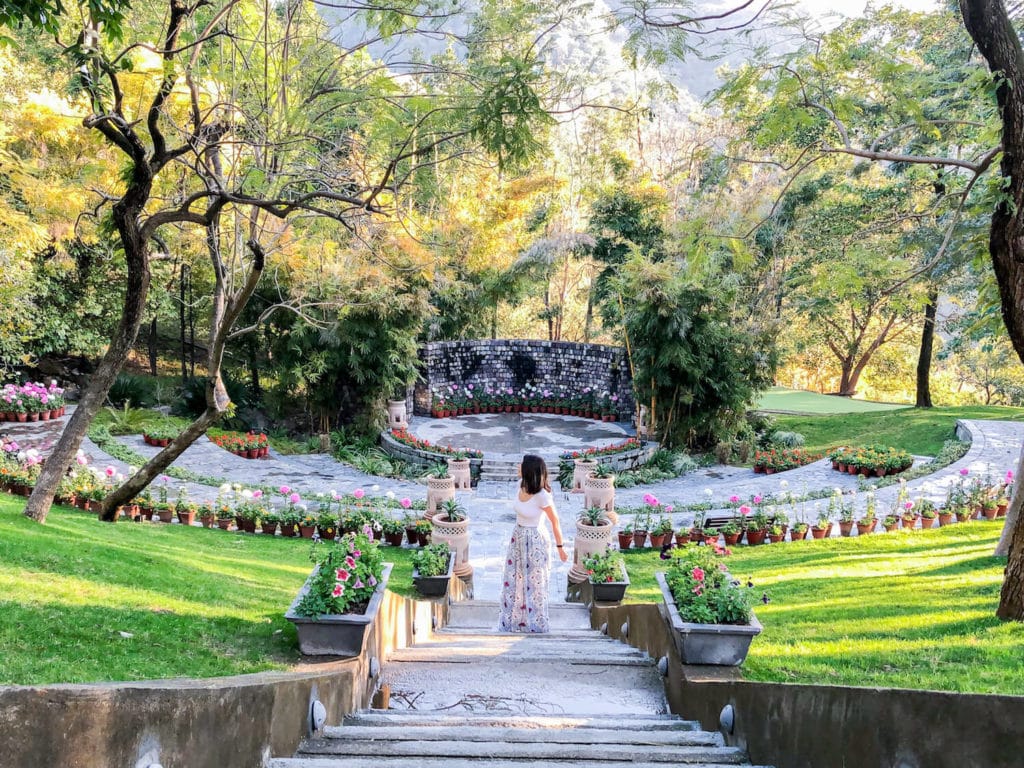
Results
Ananda in the Himalayas showed me what it means to actually reset. I’ve struggled with stress for a few years now, and had begun to worry that ‘stressed out’ was my new baseline; that it was now physically impossible for me to relax. Six nights at this resort didn’t cure me of all life’s stressors, but it reset my baseline to the lowest its been in years, provided me with tools to address stress back home, and gave me a more thorough understanding of popular wellness practices that, out of context, lack some of their most important meaning. The shoulder pain I had when I arrived was gone by day two, and after daily massages and yoga my body felt amazing.
There’s a few types of people this retreat would suit, and while it’s a cliche to say it’s for both newbies and veterans, Ananda walks the fine line between and manages to make room for both. If you’ve never practiced yoga or meditation before, then the teachers here are gentle, understanding, and incredible at explaining the concepts. They really try to make it accessible, and help you learn the basics so you can continue once you go home. On the flip side, for anyone who’s been practicing yoga and meditation for years, this is the ideal place to go deeper into your practice: world class teachers, combined with Vedanta lectures to explain the underlying philosophies give this place a spiritual edge that other yoga programmes lack.
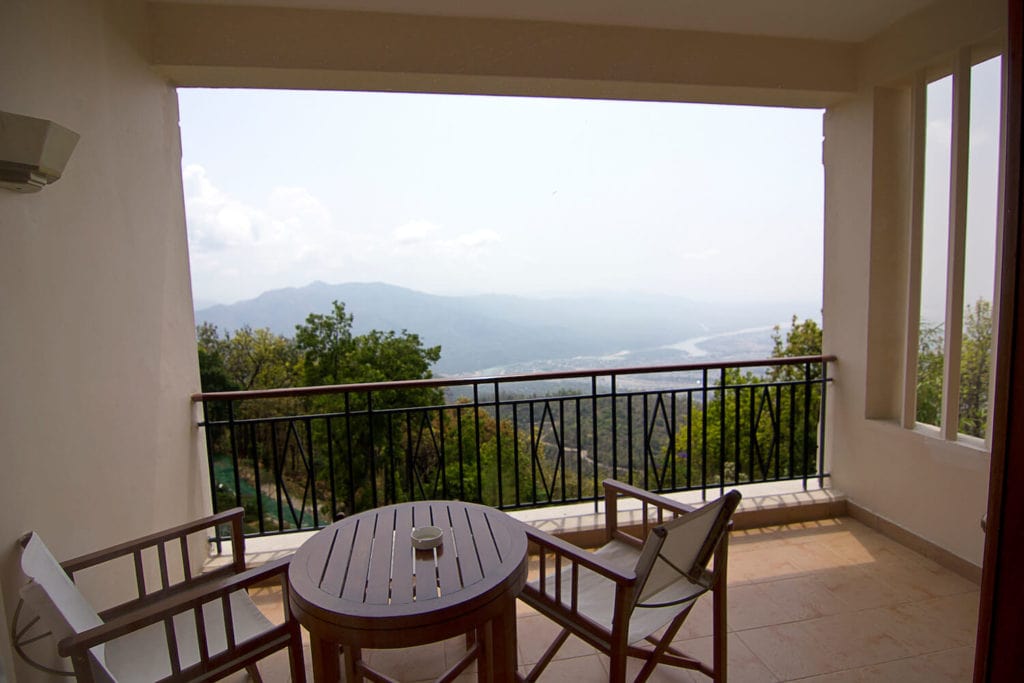
We loved…
The trip to Rishikesh for the Ganga Aarti. This happens daily by the River Ganges, and is an hour-long singing prayer led by the local yoga ashram Parmarth Niketan (the same one that organises the International Yoga Festival). Ananda has such good standing with the local community that you’ll be given the VIP treatment while you’re there, with the best seats to watch the sunset over the river and witness this sacred daily ritual.
Our Insider Tip…
Ask for a valley view room to get the best views from your elevated location: waking up to misty blue mountains and Rishikesh twinkling in the valley below never got old, and the morning sun was beautiful on the small terrace—in warmer weather, enjoy your pre-ordered honey, giner and lemon tea out there before morning yoga.
Contact bookings@compareretreats.com to book your luxury wellness retreat

